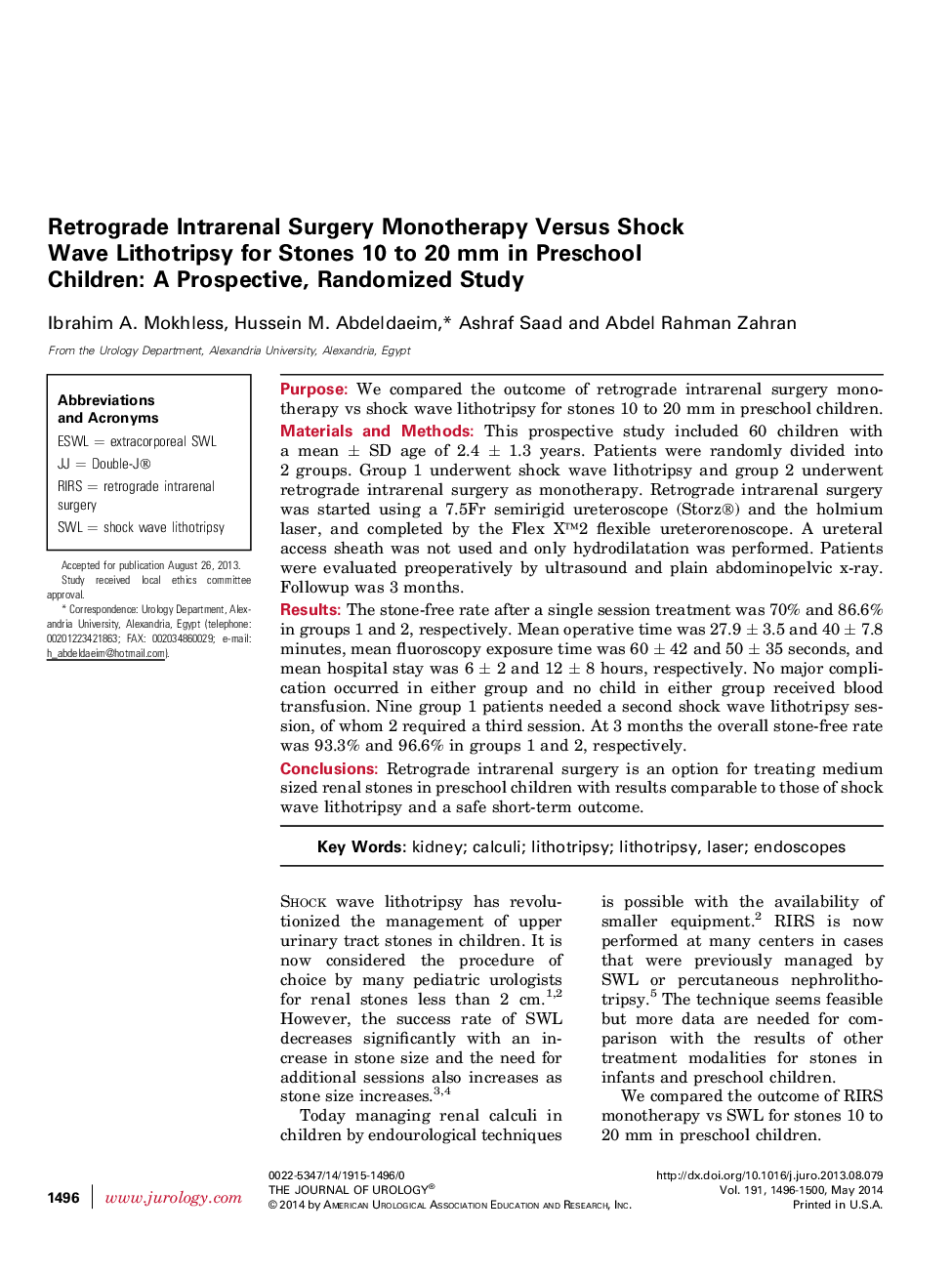| Article ID | Journal | Published Year | Pages | File Type |
|---|---|---|---|---|
| 3861961 | The Journal of Urology | 2014 | 5 Pages |
PurposeWe compared the outcome of retrograde intrarenal surgery monotherapy vs shock wave lithotripsy for stones 10 to 20 mm in preschool children.Materials and MethodsThis prospective study included 60 children with a mean ± SD age of 2.4 ± 1.3 years. Patients were randomly divided into 2 groups. Group 1 underwent shock wave lithotripsy and group 2 underwent retrograde intrarenal surgery as monotherapy. Retrograde intrarenal surgery was started using a 7.5Fr semirigid ureteroscope (Storz®) and the holmium laser, and completed by the Flex X™2 flexible ureterorenoscope. A ureteral access sheath was not used and only hydrodilatation was performed. Patients were evaluated preoperatively by ultrasound and plain abdominopelvic x-ray. Followup was 3 months.ResultsThe stone-free rate after a single session treatment was 70% and 86.6% in groups 1 and 2, respectively. Mean operative time was 27.9 ± 3.5 and 40 ± 7.8 minutes, mean fluoroscopy exposure time was 60 ± 42 and 50 ± 35 seconds, and mean hospital stay was 6 ± 2 and 12 ± 8 hours, respectively. No major complication occurred in either group and no child in either group received blood transfusion. Nine group 1 patients needed a second shock wave lithotripsy session, of whom 2 required a third session. At 3 months the overall stone-free rate was 93.3% and 96.6% in groups 1 and 2, respectively.ConclusionsRetrograde intrarenal surgery is an option for treating medium sized renal stones in preschool children with results comparable to those of shock wave lithotripsy and a safe short-term outcome.
